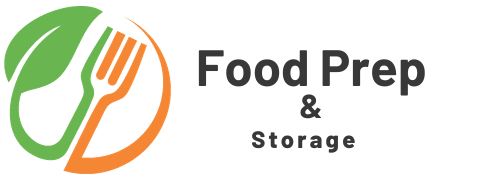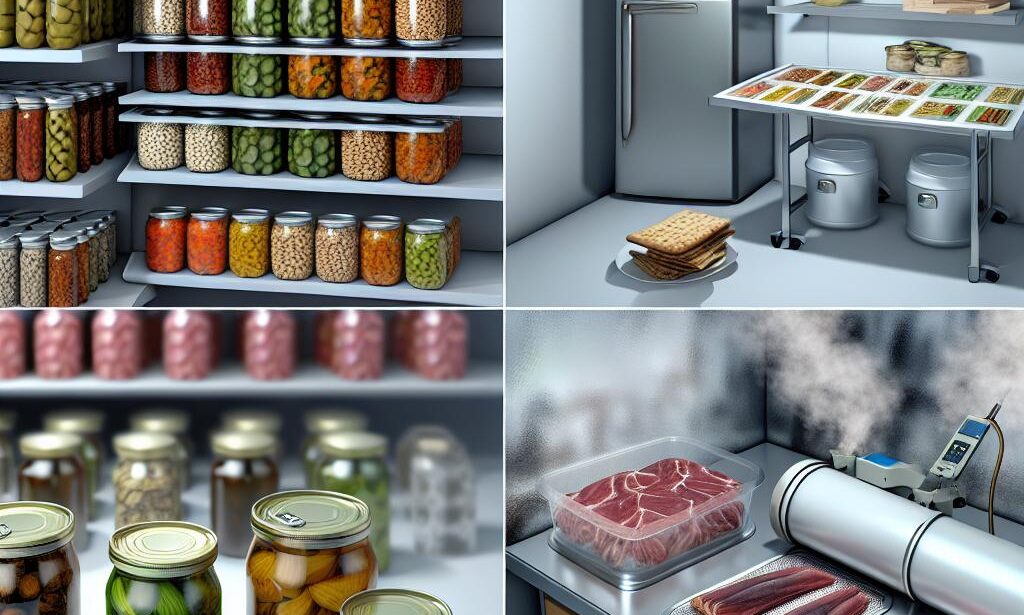Preserving food is a crucial aspect of maintaining a well-stocked pantry and reducing food waste. Whether you’re looking to extend the shelf life of fresh produce or store homemade jams and pickles, it’s important to use safe and reliable methods for food preservation. In this article, we’ll explore some tried and tested techniques for preserving food that are both safe and surefire, ensuring that your preserved foods are not only delicious but also safe to consume.
Table of Contents
- Introduction to Food Preservation Techniques
- Understanding the Science Behind Food Spoilage
- <a href="#best-practices-for-canning-and-jarring”>Best Practices for Canning and Jarring
- <a href="#exploring-the-benefits-of-freezing-and-dehydrating”>Exploring the Benefits of Freezing and Dehydrating
- Safe and Effective Methods for Fermentation and Pickling
- Q&A
- Wrapping Up

Introduction to Food Preservation Techniques
Food preservation is a crucial aspect of ensuring that our food supply remains safe and accessible for extended periods. There are various techniques that can be employed to preserve food, each with its own set of benefits and considerations. Whether you are looking to extend the shelf life of your produce or simply want to enjoy your favorite seasonal fruits and vegetables all year round, it’s important to understand the different methods available and how to use them effectively.
Some of the most common food preservation techniques include:
– Canning: This method involves heating food in airtight containers to destroy microorganisms and enzymes that cause food to spoil.
– Freezing: Freezing food at low temperatures can help to slow down the growth of microorganisms and preserve the quality of the food.
– Drying: Removing moisture from food can prevent the growth of bacteria and mold, making it an effective preservation method for fruits, vegetables, and meats.
It’s important to note that each preservation method has its own set of best practices and safety considerations. By understanding the principles behind each technique, you can ensure that your preserved food remains safe and enjoyable to consume.

Understanding the Science Behind Food Spoilage
is crucial for ensuring the safety and quality of the food we consume. By knowing the factors that contribute to food spoilage, we can take proactive measures to preserve our food and prevent wastage. One of the key factors that contribute to food spoilage is microbial growth, which can lead to foodborne illnesses if not properly addressed.
Safe and surefire methods for food preservation include:
- Canning: This method involves heating food in airtight containers to destroy microorganisms and enzymes that cause spoilage.
- Freezing: Freezing food at low temperatures can slow down the growth of microorganisms and enzymes, preserving the food for longer periods.
- Drying: Removing moisture from food can inhibit the growth of microorganisms, making it less susceptible to spoilage.
| Method | Benefits |
|---|---|
| Canning | Long shelf life |
| Freezing | Preserves nutrients |
| Drying | Convenient storage |

Best Practices for Canning and Jarring
When it comes to canning and jarring, there are several best practices that can ensure the safety and quality of your preserved foods. By following these methods, you can be sure that your canned and jarred goods will last longer and taste better.
One of the most important is to always use the proper equipment and follow the recommended guidelines. This includes using clean and sterilized jars, lids, and bands, as well as a reliable canner or pressure cooker. Additionally, it’s crucial to use the correct processing times and pressures for the specific type of food you are preserving. Another key best practice is to inspect your jars for any signs of damage or defects before use, as these can compromise the seal and safety of the preserved food.
Furthermore, it’s essential to properly label and store your canned and jarred goods to ensure easy identification and safe consumption. This includes labeling each jar with the contents and date of preservation, as well as storing them in a cool, dark, and dry place. By following these best practices, you can be confident in the safety and quality of your canned and jarred foods.

Exploring the Benefits of Freezing and Dehydrating
When it comes to food preservation, freezing and dehydrating are two safe and surefire methods that can help extend the shelf life of your favorite fruits, vegetables, and meats. Both techniques have their own unique benefits, and understanding how to properly utilize them can help you save money, reduce food waste, and enjoy your favorite foods all year round.
Freezing is a simple and effective way to preserve a wide variety of foods. It helps to retain the nutritional value, flavor, and texture of the food, making it a popular choice for many home cooks. On the other hand, dehydrating removes the moisture from the food, which helps to prevent the growth of bacteria and mold, and also reduces the overall weight and volume of the food, making it easier to store and transport.
Whether you’re looking to stock up on seasonal produce, create your own trail mix, or simply want to have a supply of emergency food on hand, both freezing and dehydrating offer a range of benefits that can help you make the most of your food and reduce waste.

Safe and Effective Methods for Fermentation and Pickling
When it comes to food preservation, fermentation and pickling are two tried and true methods that have been used for centuries. Not only do they extend the shelf life of food, but they also enhance the flavor and nutritional value of the ingredients. However, it’s important to follow safe and effective practices to ensure that the end result is not only delicious but also safe to consume.
One of the key factors in safe fermentation and pickling is creating the right environment for beneficial bacteria to thrive while inhibiting the growth of harmful bacteria. This can be achieved through proper sanitation, controlling the temperature, and using the right amount of salt or brine. Additionally, using high-quality, fresh ingredients is essential for successful fermentation and pickling. By following these guidelines, you can enjoy the benefits of preserved foods without any safety concerns.
Q&A
Q: Why is food preservation important?
A: Food preservation helps to extend the shelf life of perishable items, reducing food waste and ensuring a steady food supply.
Q: What are some safe methods for food preservation?
A: Some safe methods for food preservation include canning, freezing, drying, and pickling.
Q: How does canning work as a method of food preservation?
A: Canning involves sealing food in airtight containers and heating them to destroy microorganisms that cause spoilage.
Q: What foods are best for freezing?
A: Foods with high water content, such as fruits, vegetables, and meats, are best for freezing.
Q: What is the process of drying food for preservation?
A: Drying food involves removing moisture from the food to prevent the growth of bacteria and mold.
Q: What are the key factors to consider when pickling food?
A: When pickling food, it is important to use the correct ratio of vinegar, salt, and sugar to create a safe and flavorful product.
Q: Are there any risks associated with food preservation?
A: Improper food preservation can lead to the growth of harmful bacteria, which can cause foodborne illnesses.
Q: How can one ensure the safety of preserved foods?
A: It is important to follow proper food preservation techniques, use clean and sanitized equipment, and store preserved foods in appropriate conditions to ensure safety.
Wrapping Up
In conclusion, there are several safe and surefire methods for food preservation that can help extend the shelf life of your perishable items. Whether you choose to can, freeze, dry, or pickle your foods, it’s important to follow proper guidelines and techniques to ensure the safety and quality of your preserved goods. By taking the time to properly preserve your food, you can reduce waste and save money while enjoying the taste of your favorite seasonal produce all year round. Remember to always prioritize food safety and follow recommended practices to ensure the best results. With the right knowledge and tools, you can confidently preserve your food for future use.

